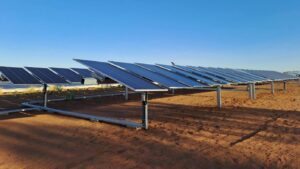PRESS RELEASE
New rules released today will give power system businesses more detailed information on whether or not electricity shortfalls are looming.
The new AEMC final determination will give generators and demand response providers more information ahead of time about potential shortfalls and forecasted needs in the power system. This will help avoid blackouts as generators can better schedule their maintenance outside of peak times.
The change also helps implement the national retailer reliability obligation (RRO) which has underpinned the reliability of the national electricity market since 1 July 2019. The RRO makes electricity retailers contract with generators or ‘on demand’ resources to cover projected supply shortfalls.
And the final rule provides greater transparency around AEMO reliability assessments over the medium term of two years. It also includes extending from two to three years, the period for which generation availability is published.
The determination relates to MT PASA (medium-term projected assessment of system adequacy), which is carried out by the Australian Energy Market Operator (AEMO) to assess whether or not electricity supply is expected to meet demand.
Acting AEMC Chief Executive Ms Suzanne Falvi said the changes would give the market more granular detail on generation reliability and availability ahead of time, giving generators and demand response providers more opportunity to respond and fill a projected gap in power supply at a lower cost to consumers.
“This work is part of the AEMC’s system security and reliability action plan,” Ms Falvi said.
“Increasing the accuracy and transparency of information in the market helps the market operate more efficiently. It will result in AEMO procuring emergency reserves more effectively and give energy suppliers the information they need to get on with the job. All of this will helps lower the costs consumers see on their energy bill and this remains a key focus for the AEMC in 2020.”
BACKGROUND
Under the National Electricity Rules, AEMO is required to produce a range of forecasts as part of the MT PASA (medium-term projected assessment of system adequacy), including projected demand for electricity and the availability of generators. On the supply side, the forecasts are based on information provided by generators including on their planned outages. They also take into account unplanned outages, such as a generation unit becoming unavailable due to a technical issue.
AEMO’s forecasts provide a signal to the market on whether the reliability standard is expected to be met in the medium term. This gives market participants the opportunity to respond by supplying the amount of generation and demand response that is expected by the reliability standard.
The AEMC’s final determination makes a range of changes to the MT PASA to improve the transparency and accuracy of information about potential electricity shortfalls. Key features include requiring AEMO to:
- publish information about planned maintenance for individual generation units (currently only aggregated information about generator availability is published)
- provide greater clarity on how future generation is included in the forecast, as well as how generation availability impacts forecasts under a range of scenarios
- use the same format when publishing forecast and actual demand so the data can be easily compared
- require the data that participants provide into the MT PASA to be based on participants’ ‘current intentions and best estimates’.
The final determination also extends the publication of generation availability outlook from two to three years. This will give the market more information on generation supply, which will allow for better informed decision to be made by generators around adjusting generator maintenance schedules, investing in new plant and equipment, or developing demand response programs.
It will also align generation availability information with the Retailer Reliability Obligation (RRO). The RRO requires retailers to contract with generators to cover a projected shortfall in electricity supply. It can be triggered up to three years ahead of a projected shortfall. By extending the generation availability outlook, retailers and generators will have better information to agree on contracts for electricity supply under the RRO. This will help reduce the likelihood of energy shortfalls triggered if the RRO is called into play.
In addition, the MT PASA is fundamental to AEMO’s ability to procure emergency reserves under the Reliability and Emergency Reserve Trader (RERT). AEMO is required to use the MT PASA to help assess the need for, and amount of, emergency reserves to buy under the RERT ahead of an expected shortfall.










